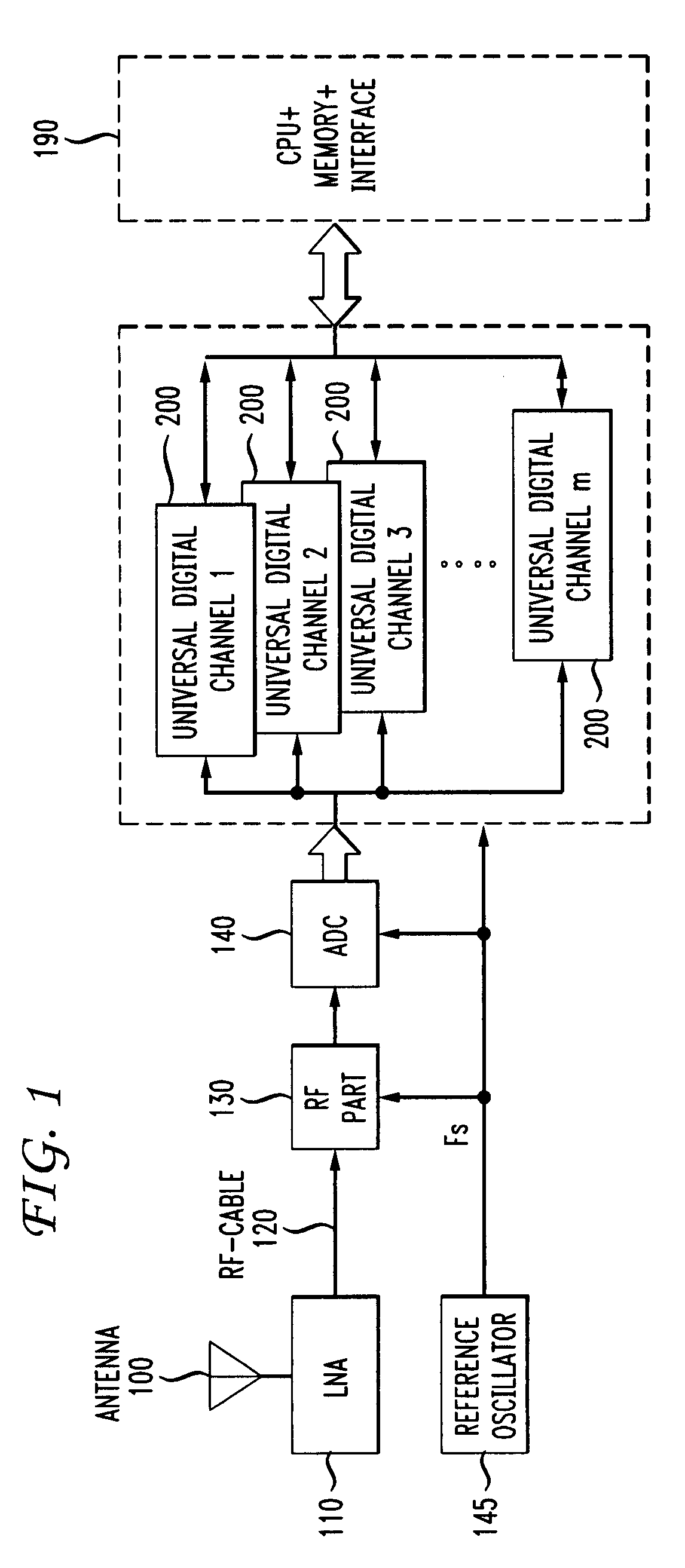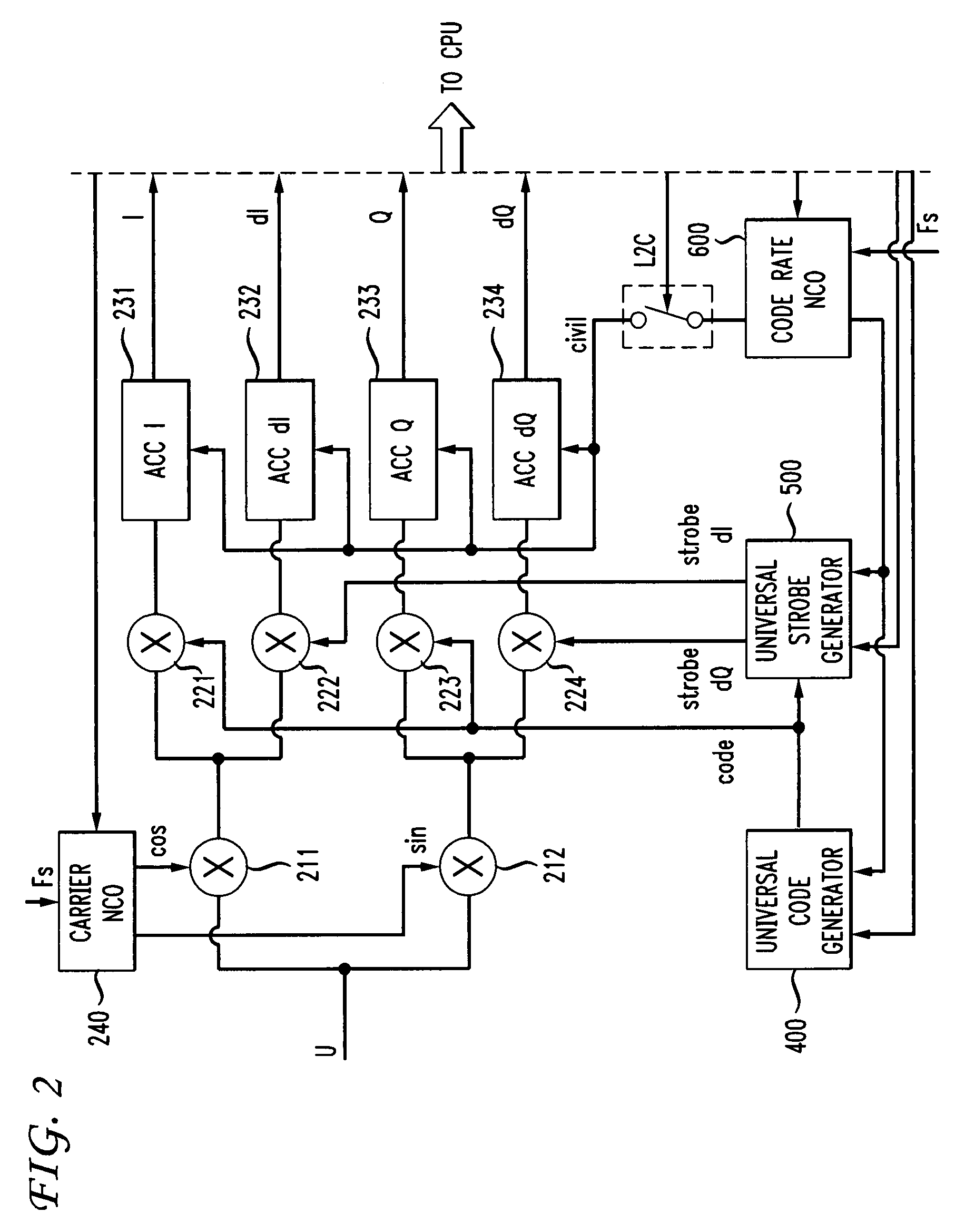Universal digital channel for receiving signals of global navigation satellite systems
a global navigation satellite and digital channel technology, applied in satellite radio beaconing, measurement devices, instruments, etc., can solve problems such as multipath errors, complex operation of rover receivers, and ambiguity resolution of phase measurements, so as to reduce the number of elements
- Summary
- Abstract
- Description
- Claims
- Application Information
AI Technical Summary
Benefits of technology
Problems solved by technology
Method used
Image
Examples
Embodiment Construction
[0028]Different satellite systems typically transmit signals in frequency bands that are relatively close together (1560-1605, 1150-1280 MHz). Both the GPS and GLONASS satellites transmit a signal known as a Pseudo Random Noise (PRN) code which spreads the spectrum of signals and allows ranges to be measured. The power levels of the received signals are lower than intrinsic noise in the input band of the receiver.
[0029]In accordance with an aspect of the present invention, a receiver can receive signals from many satellite systems. When processing signals received from a plurality of satellites, the receiver can take into account the similarities and differences of the signals.
[0030]For example, if the receiver simultaneously receives signals from GLONASS satellites and GPS satellites, the receiver may determine that:[0031]Both types of satellites (i.e., GLONASS satellites and GPS satellites) transmit on two frequency bands, called L1 and L2.[0032]Both types of satellites transmit P...
PUM
 Login to View More
Login to View More Abstract
Description
Claims
Application Information
 Login to View More
Login to View More - R&D
- Intellectual Property
- Life Sciences
- Materials
- Tech Scout
- Unparalleled Data Quality
- Higher Quality Content
- 60% Fewer Hallucinations
Browse by: Latest US Patents, China's latest patents, Technical Efficacy Thesaurus, Application Domain, Technology Topic, Popular Technical Reports.
© 2025 PatSnap. All rights reserved.Legal|Privacy policy|Modern Slavery Act Transparency Statement|Sitemap|About US| Contact US: help@patsnap.com



